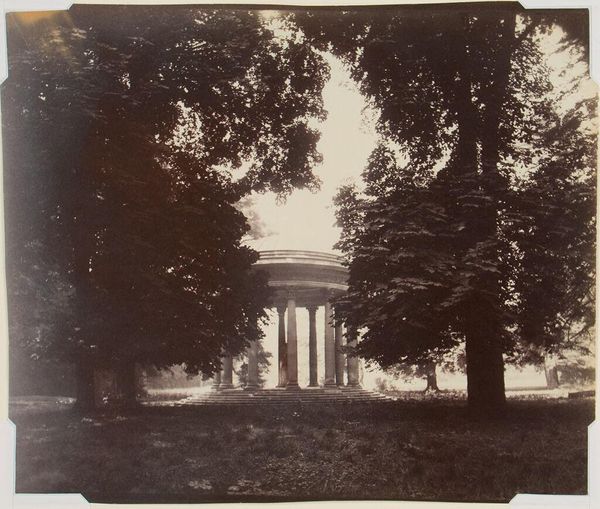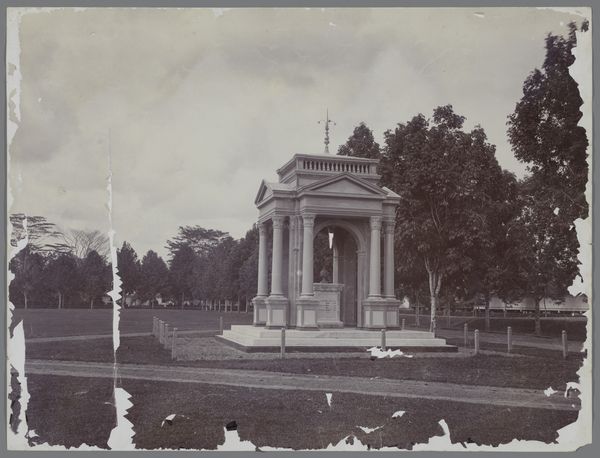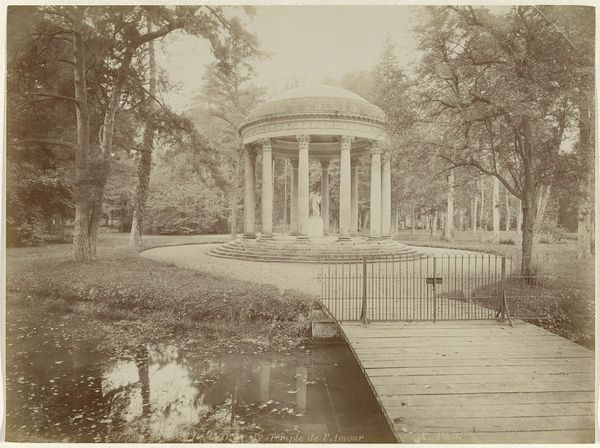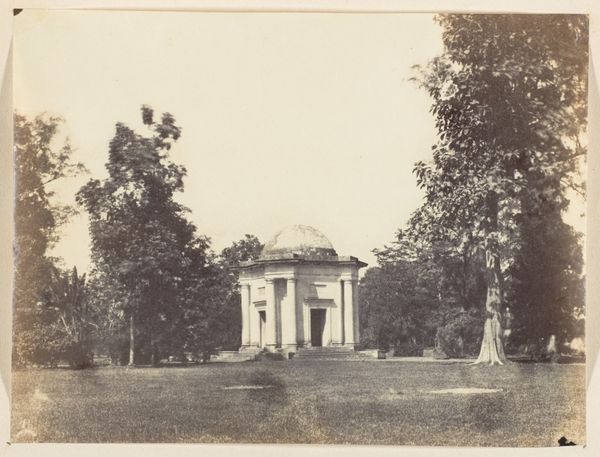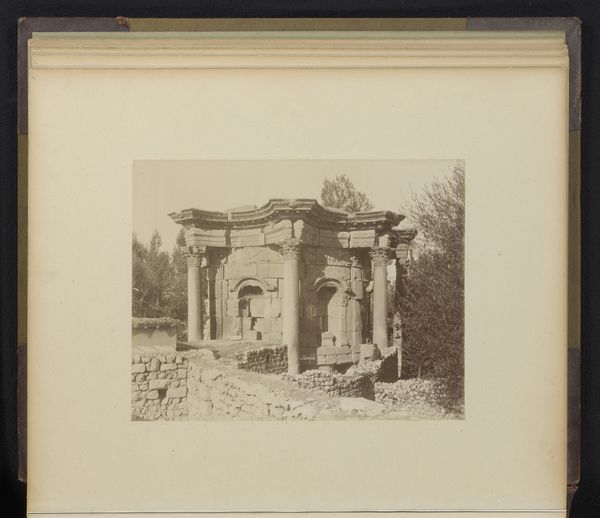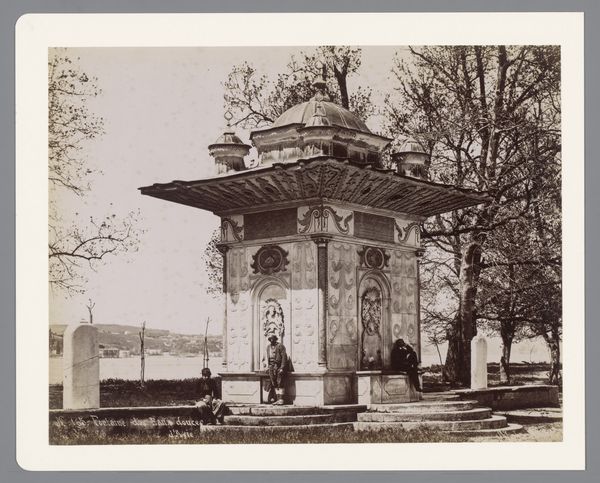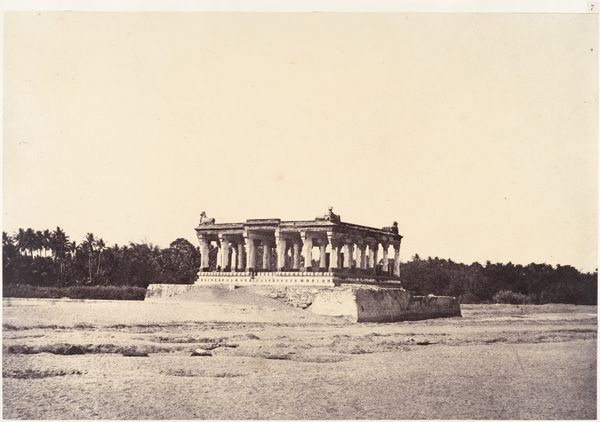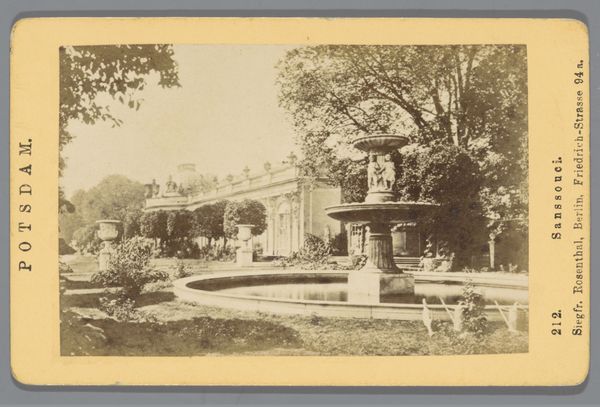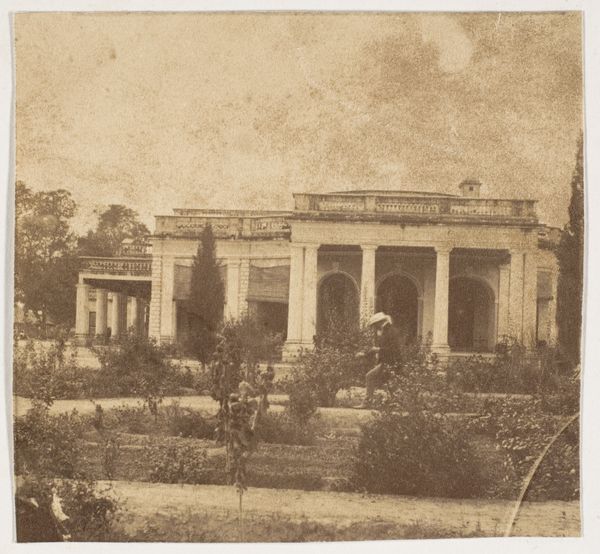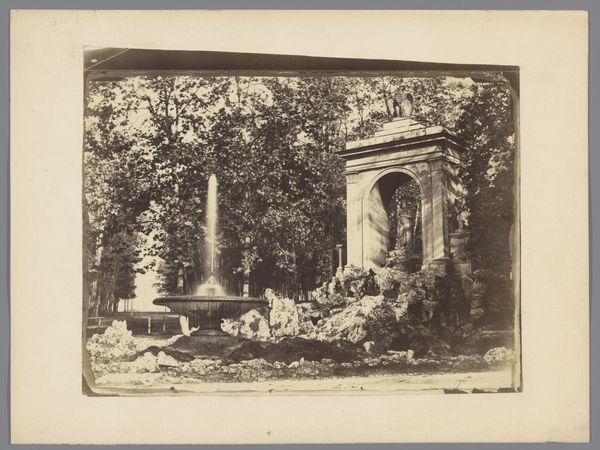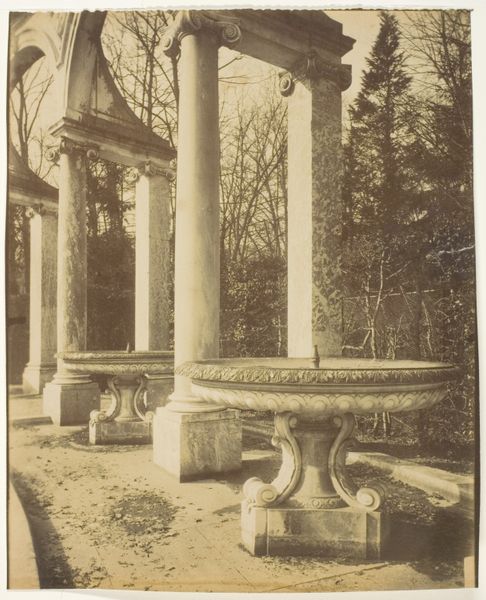
Portico van de tempel van Antonino en Faustina (replica) c. 1880 - 1895
0:00
0:00
fratellialinari
Rijksmuseum
Dimensions: height 197 mm, width 250 mm, height 241 mm, width 328 mm
Copyright: Rijks Museum: Open Domain
Curator: Here we have Fratelli Alinari's photograph, circa 1880 to 1895, of the "Portico van de tempel van Antonino en Faustina (replica)". Editor: My first impression is of an unsettling quietude. The black and white tones combined with the overgrown surrounding foliage give a sense of ancient abandonment and stoic elegance. The contrast is stark. Curator: Indeed, Alinari’s lens captures more than just neoclassical architecture. It speaks to power, gender, and remembrance, particularly through its subjects, Antoninus Pius and his wife Faustina. Antoninus deified Faustina upon her death, marking her not only as empress but as a goddess. Editor: Notice the lines, though, Editor: the rigid verticality of the columns juxtaposed with the wild organic chaos of the trees surrounding them. This sets up a beautiful tension between order and disorder, civilization and nature, almost an illustration of binary oppositions at play. Curator: Precisely. Roman society hinged on strict hierarchies, yet domestic spaces afforded women like Faustina considerable influence. The deification could also reflect attempts by emperors to legitimize their rule through divine associations. This photo reminds me of the power and visibility afforded to the very wealthy. Editor: The light! I can almost feel the Mediterranean sun baking those stones. This print allows us to visually parse the physical structures, which serves to evoke their profound historical presence. What is left of the temple evokes reflection. Curator: What this photograph illuminates, ultimately, is not simply an architectural relic, but the complexities inherent in how power is performed, memorialized, and gendered through symbolic forms. These columns do more than just support weight. Editor: A melancholic beauty indeed. Examining these classical components from entablature to column is useful. Curator: This print enables us to consider the photograph and to situate ourselves within the narratives of history. Editor: I'll remember the image of structural forms intertwined with uncontrolled nature, which allows us to reconsider our understanding of place and the intersection of civilization and environment.
Comments
No comments
Be the first to comment and join the conversation on the ultimate creative platform.

